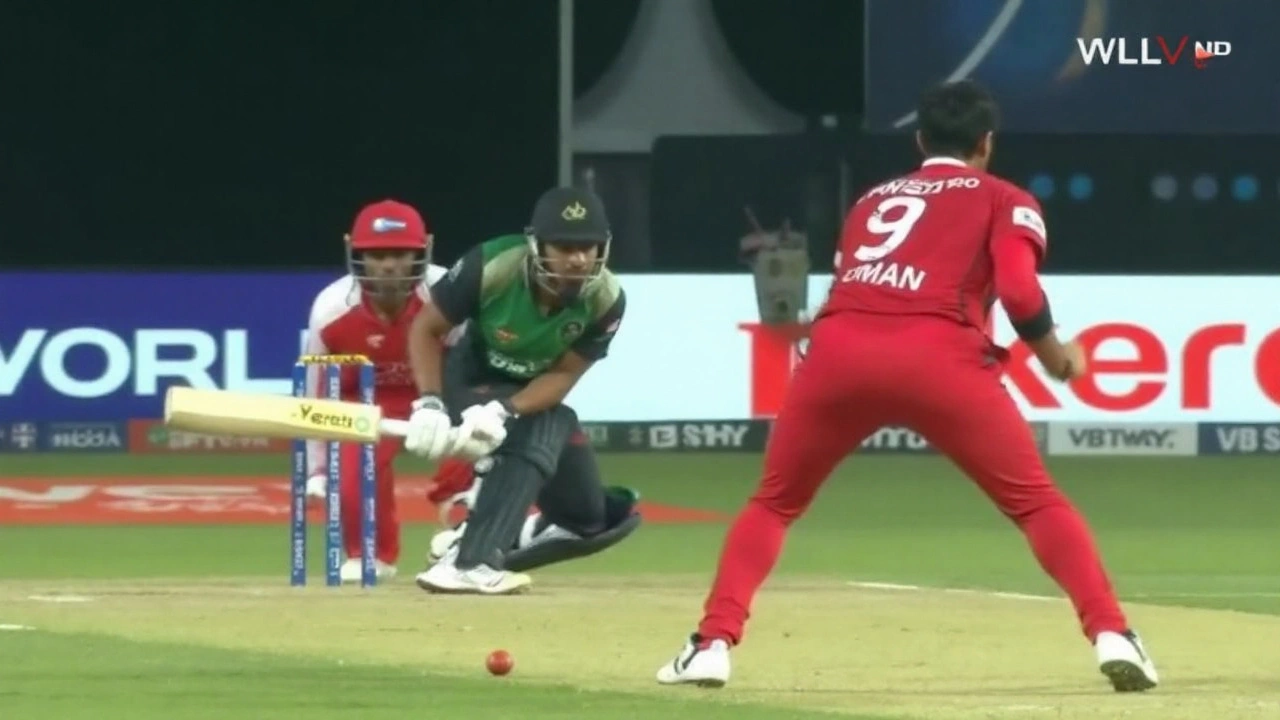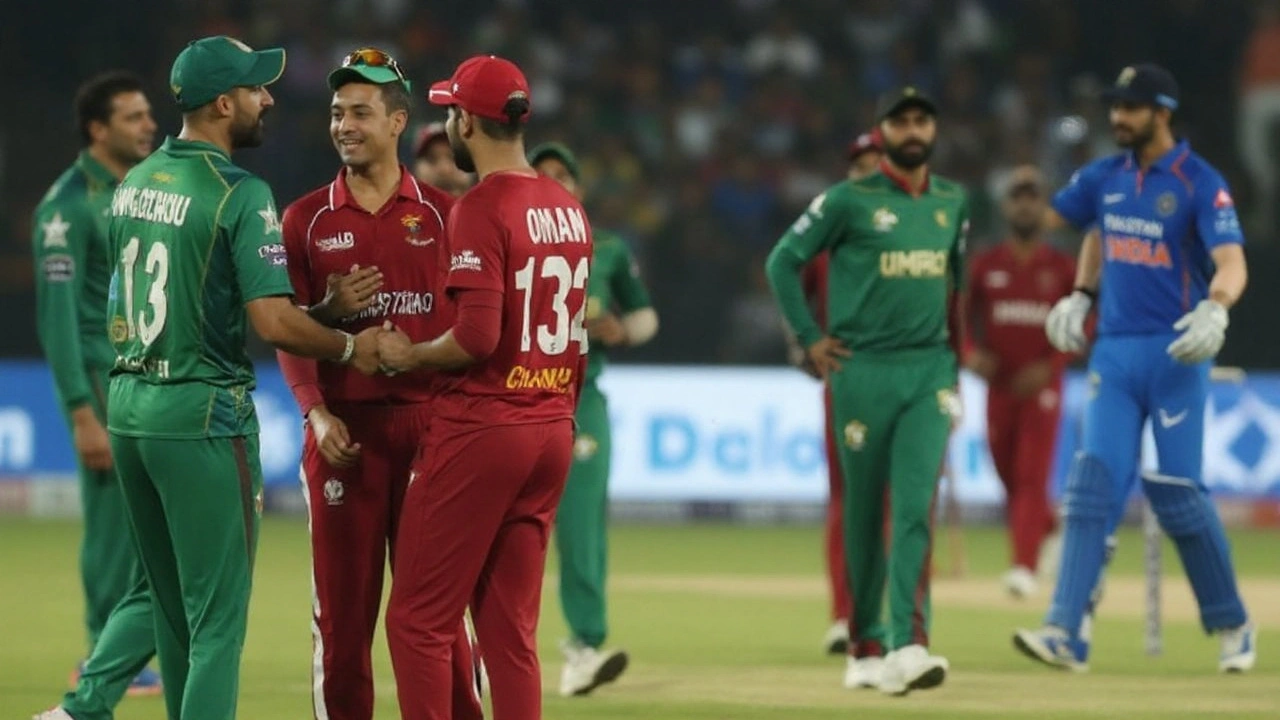One big win can change the mood of a tournament overnight. Pakistan’s 93-run thrashing of Oman did exactly that, shaking up the table and tightening the race in Group A. The result keeps India at the top on net run rate, but it also signals that Pakistan are very much in business after a measured, clinical outing with bat and ball.
By Aarav
Group A: India’s cushion, Pakistan’s surge, and the math behind NRR
Pakistan’s plan was simple and sharp: set the tone early, cash in late, and bowl with discipline. Wicketkeeper-batter Mohammad Haris delivered the statement knock—a fluent half-century that anchored the innings and kept the scoring rate healthy. Mohammad Nawaz’s 19 off 10 at the death was a classic lower-order punch, pairing nicely with Fakhar Zaman’s boundary bursts to push Pakistan well beyond a par score. The bowlers then squeezed Oman, over after over, to close out a commanding 93-run win.
On the table, that performance matters for two reasons: points and net run rate. Pakistan now have 2 points from one game and a net run rate of +4.650. India, also on 2 points from one game, stay ahead with a towering +10.483—built on their own big opening win. That cushion explains why India remain first despite Pakistan’s emphatic result.
Here’s where Group A stands right now:
- India: 2 points (NRR +10.483)
- Pakistan: 2 points (NRR +4.650)
- Oman: 0 points (NRR -4.650)
- United Arab Emirates: 0 points (NRR -10.483)
The spread tells a story. India and Pakistan are in control, while Oman and UAE not only need wins—they need big ones to fix their negative NRRs. In a short T20 group stage, every over counts because the tie-breaker bites hard.
Quick refresher: net run rate (NRR) is the average runs you score per over minus the average runs you concede per over across all matches. In short, bat fast, restrict the opposition, and avoid being bowled out cheaply. Blowouts supercharge NRR; narrow wins nudge it. That’s why India’s early demolition gives them a head start and why Pakistan’s margin against Oman was doubly valuable.
What does this mean for the next few matchdays? If India and Pakistan both win their next outings, they’ll reach four points each and turn their meeting into a table-topper for first place. If either slips, Oman or UAE get a lifeline. For the two winless teams, the math is simple but brutal: win now, and win big. The negative NRRs of -4.650 (Oman) and -10.483 (UAE) won’t flip without statement victories.
From a tactical lens, Pakistan will be happy with the balance they showed. The top order set the tempo without panic, the middle overs didn’t stall, and the late surge arrived on cue. With the ball, they kept their lengths honest, cut off release shots, and forced Oman to take risks too early. For India, the challenge is different: protect that NRR edge while staying ruthless. A calm chase or another heavy win would keep them where they want to be—out front with breathing room.
For Oman, the takeaway is to reset quickly. Powerplays can’t drift in T20s; they need either a brisk start with the bat or early wickets with the ball to avoid falling behind in both the match and the numbers. UAE’s task is similar, but with an even steeper climb due to the double-digit negative NRR. One good performance changes the tone; two change the group.
All of this builds towards the headline fixture waiting in the group stage: India vs Pakistan. Beyond the hype, it’s a pure numbers game this time. Points, yes—but also NRR swings that could shape the semi-final and knockout trajectories. The team that manages tempo better across the full 40 overs will likely walk away with more than bragging rights.

Group B: Afghanistan set the tempo, Bangladesh keep pace, Sri Lanka waiting
Across the draw, Group B already has a rhythm. Afghanistan sit on top with 2 points and a healthy NRR of +4.700, a sign they got their basics right and finished strong. Bangladesh sit second on 2 points with +1.001, steady rather than explosive but well placed. Hong Kong have had a rough start—two losses and an NRR of -2.889—while Sri Lanka have yet to play, holding their cards close for now.
Afghanistan’s T20 template is familiar: punchy powerplay batting, crafty middle-overs control, and late hitting that can turn a par score into a winning one. Bangladesh, for their part, know how to squeeze the middle overs and bat deep, which keeps them competitive even when the powerplay doesn’t pop. Hong Kong need to find a way to play risk-smart cricket—aggressive enough to put pressure on opponents but measured enough to bat 20 overs and avoid NRR damage. Sri Lanka’s first outing will be telling: roles, match-ups, and the confidence of their top three will set the tone for the rest of their group stage.
Zooming out, the tournament pattern is classic T20. Teams chasing a net run rate boost are going harder in the last five overs when batting first, aiming for those extra 10–15 runs that shift the equation. Bowlers who hit the hard length and hide pace are valuable, especially when dew makes gripping tricky in second innings. Captains are leaning into match-ups rather than fixed spells—one over here, two there—because one bad over can undo ten good ones when NRR is king.
What should teams bank on from here? Three things:
- Powerplay intent: 40–50 without losing shape beats a reckless 60 with a collapse. You can’t win NRR if you don’t bat your overs.
- Middle-overs clarity: Rotate, target the fifth bowler, and avoid dot-ball clusters. Momentum in overs 7–15 decides the death overs.
- Bowling patience: Stick to fields, not just plans. T20 pressure creates wickets as often as magic balls do.
There’s also the psychological edge. India’s big NRR gives them a cushion—useful, but it can invite complacency. Pakistan’s win builds momentum—great, but it needs consistency to matter. Oman and UAE have freedom now: when your NRR is deep in the red, the approach has to be fearless but smart. In Group B, Afghanistan and Bangladesh have the early rhythm, while Sri Lanka can change the mood of the table with a strong first night. Hong Kong’s mission is simple: stay alive long enough in games to force mistakes.
The stakes are the same across both groups: 2 points for a win, 1 for a tie or no-result, and 0 for a loss. With Asia Cup 2025 moving quickly, the tie-breaker’s shadow looms over every decision—whether to bat first on a tacky surface, when to deploy the finisher, how soon to bring back the main quick. The smartest teams won’t just play the opposition; they’ll play the math.
As the group stage tightens, keep an eye on margins. India’s giant +10.483 won’t be easy to dent, but it’s not untouchable. Pakistan’s +4.650 can leap with one more commanding result. Oman and UAE need a spark to turn those negatives around. And over in Group B, Afghanistan and Bangladesh know one big result can lock in the top-two race before Sri Lanka even find their stride. The next few games won’t just decide who wins—they’ll decide how convincingly they do it.
